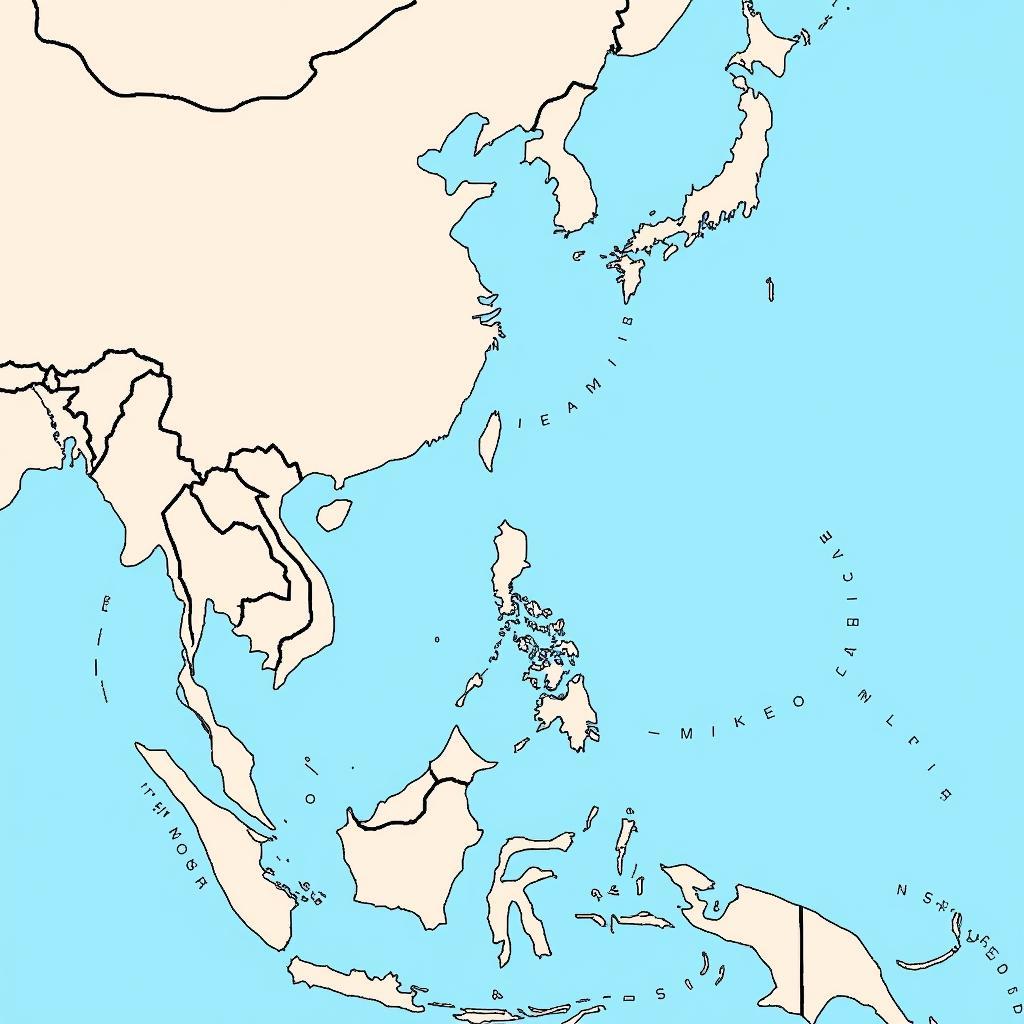In 2014, ASEAN and China engaged in their first formal discussion regarding a Code of Conduct (COC) for the South China Sea, marking a significant milestone in managing maritime disputes. This pivotal event highlighted the growing need for a framework to govern activities and prevent escalation of tensions in the contested waters. The discussions represented a shift towards a more structured approach to resolving the complex issues surrounding the South China Sea.
A Turning Point: The 2014 COC Discussions
The 2014 discussions on the COC were a turning point in ASEAN-China relations concerning the South China Sea. For years, tensions had simmered, with various incidents highlighting the precarious nature of the situation. The absence of a clear set of rules governing maritime activities fueled uncertainty and mistrust. The decision to formally discuss a COC was a recognition by both sides of the urgent need to establish a framework for managing the disputes.
Why 2014 Was So Important
The year 2014 was particularly significant due to several factors. Increased assertiveness by China in the region, including land reclamation activities, heightened concerns among ASEAN member states. This prompted a greater urgency to address the issue through diplomatic channels. The 2014 discussions provided a platform for ASEAN and China to engage in constructive dialogue and explore potential solutions for managing their maritime differences.
The discussions also reflected a growing consensus within ASEAN on the importance of a legally binding COC. While some member states maintained closer ties with China, the shared concern over maritime security helped to unify their position in the negotiations. This united front strengthened ASEAN’s bargaining power and contributed to the momentum for establishing a COC.
Key Issues Addressed in the 2014 Discussions
The 2014 discussions touched upon several crucial issues related to the South China Sea. These included:
- Scope of the COC: Defining the geographical area covered by the COC was a key point of discussion.
- Dispute Resolution Mechanisms: The process for resolving disputes and managing incidents at sea was a central concern.
- Confidence-Building Measures: Identifying specific actions to build trust and prevent miscalculations between parties.
- Legal Status of the COC: Determining whether the COC would be legally binding or a voluntary set of guidelines.
Navigating the Complexities: Challenges and Opportunities
The negotiations were not without their challenges. Differing interpretations of international law and overlapping claims in the South China Sea created obstacles to reaching a consensus. However, the 2014 discussions also presented opportunities for building trust and improving communication between ASEAN and China.
 Map highlighting the disputed areas in the South China Sea claimed by various nations
Map highlighting the disputed areas in the South China Sea claimed by various nations
“The 2014 discussions were a critical first step towards creating a more stable and predictable maritime environment in the South China Sea,” notes Dr. Anya Sharma, a Senior Fellow at the Institute for Southeast Asian Studies. “While challenges remained, the willingness of both sides to engage in formal discussions demonstrated a commitment to finding a peaceful resolution.”
The Long Road to a Code of Conduct
The 2014 discussions were just the beginning of a long and complex process. Subsequent rounds of negotiations have continued to grapple with the challenging issues surrounding the South China Sea. However, the initial discussions laid the groundwork for future progress and established the COC as a central element in managing the maritime disputes.
What Happened After 2014?
Following the 2014 discussions, ASEAN and China continued to engage in negotiations, aiming to finalize a COC. While a final agreement remains elusive, the process has led to greater understanding and cooperation between the parties involved.
“The road to a comprehensive and effective COC is long and challenging,” explains Dr. Jian Li, Professor of International Relations at Peking University. “But the continued dialogue between ASEAN and China is a testament to the commitment of both sides to finding a solution.” Another expert, Dr. Maria Santos, Director of the Maritime Security Institute in Manila, adds, “The progress made since 2014, while incremental, demonstrates the importance of sustained diplomatic efforts in addressing complex maritime disputes.”
Conclusion: 2014 ASEAN-China COC Discussions – A Foundation for the Future
The 2014 ASEAN-China discussions on the COC for the South China Sea marked a crucial moment in the ongoing efforts to manage maritime disputes in the region. While a final agreement remains a work in progress, the initial discussions provided a vital platform for dialogue and laid the foundation for future negotiations. The continued commitment to finding a peaceful resolution through a COC offers hope for a more stable and secure future in the South China Sea.
FAQ
- What is the COC? The COC is a proposed set of rules and guidelines for managing maritime activities and resolving disputes in the South China Sea.
- Why is the South China Sea important? The South China Sea is a strategically important waterway for international trade and rich in natural resources.
- What are the main disputes in the South China Sea? Overlapping claims to islands, reefs, and maritime zones are the primary source of disputes.
- Who are the claimants in the South China Sea? China, Taiwan, Vietnam, the Philippines, Malaysia, and Brunei all have claims in the South China Sea.
- What is ASEAN’s role in the South China Sea? ASEAN plays a key role in facilitating dialogue and promoting peaceful resolution of disputes in the region.
- Why was 2014 significant? 2014 marked the first formal discussions between ASEAN and China on a COC.
- Has a COC been finalized yet? No, negotiations are still ongoing.
When you need assistance, please contact Phone Number: 0369020373, Email: aseanmediadirectory@gmail.com Or visit us at: Ngoc Lien Village, Hiep Hoa, Bac Giang, Vietnam. We have a 24/7 customer support team.
